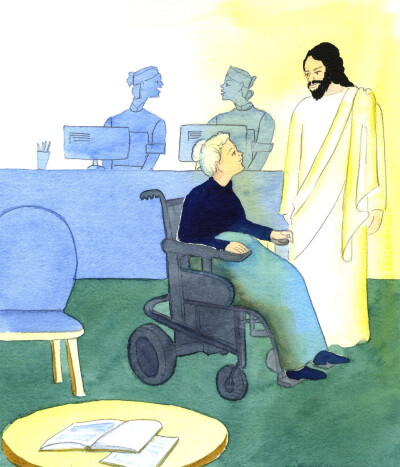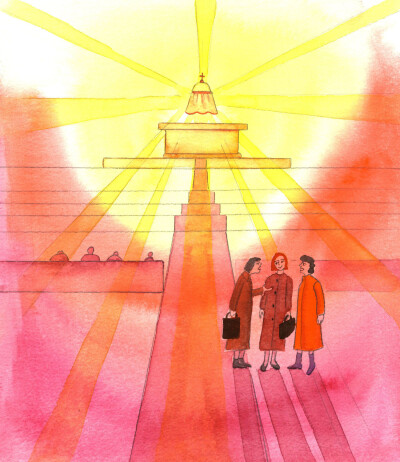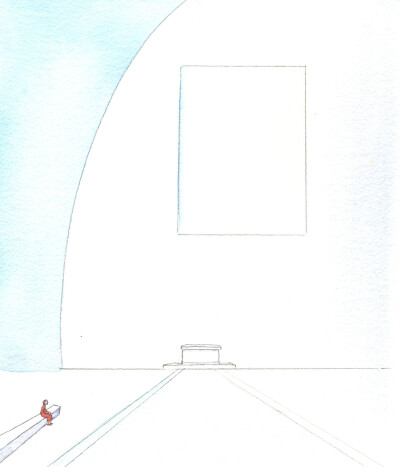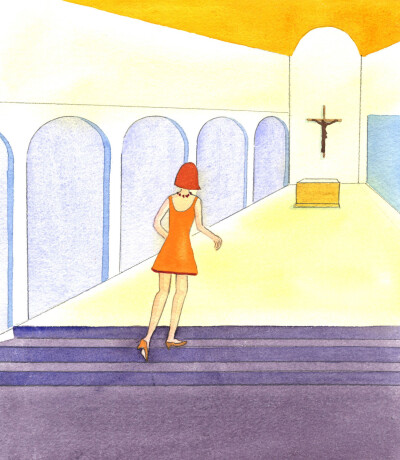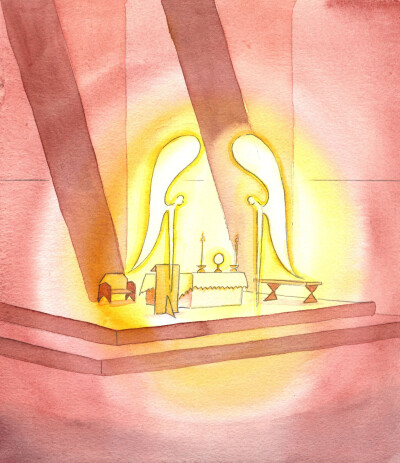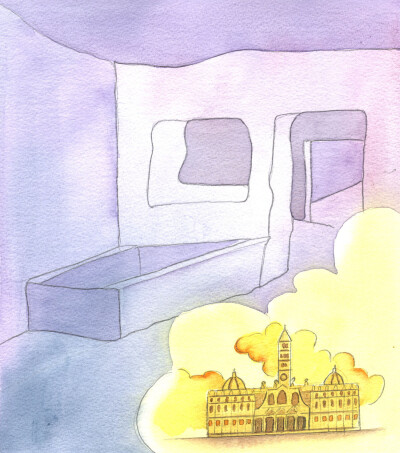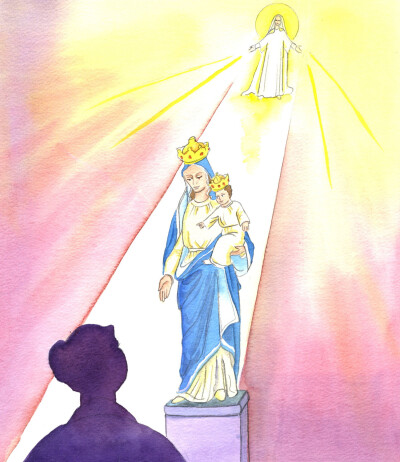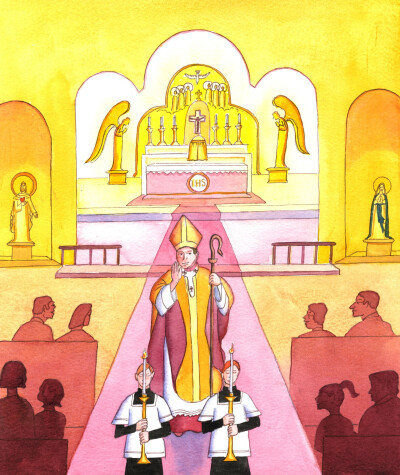Search Page
Showing 21 - 37 of 37
From the beginning, Christian life has been lived out using symbols and signs. What signs are there, in some modern churches, which have filthy entrances, and modernistic crucifixes, a hidden Blessed Sacrament, and no statue of Our Lady - in an area where people chat and cheer as if at a football rally. St. Pius X would be horrified by one church dedicated to his memory.
Plain churches, without images, encourage ordinary behaviour. Some of the Saints, to whom our churches are dedicated, would weep, if they could hear that noisiness, and see the disrespect shown by many Catholics in church. A wise priest in such circumstances puts out a notice, as a reminder.
When people are poorly-instructed about reverence, and when a church has few signs and images that indicate it is a sacred place, the faithful sometimes act, for a Mass, as if at a rally or a pop-concert. Even if a few pictures of the Saints are then put up around the walls, this is as effective as sticking a small plaster in a big wound. Change comes from clear instruction; and from effective signs of decoration at the entrance.
We who belong to Christ must not imagine that we go 'away' from Him when we leave the church building, or when we finish our prayers at home. Christ is very close to us, wherever we are, whether at work, or in leisure-time, or in our trips to the hospital or the shops.
Christ wanted to make His Catholic church buildings into 'little Heavens' on earth, where people could offer prayer, in peace, in His Presence, before the Holy Eucharist, with the Angels. When there is constant chatter, this defeats His purpose. The Clergy, above all, should encourage people in church to behave with a reverent silence.
When a Catholic church is designed not to be the threshold of Heaven, for a holy people, who adore Christ Really Present in His Divine Glory, but as an architectural gem, of beautiful proportions but with no sign or symbol of Christian faith, it is unworthy of the name "House of God". The Faithful deserve to see reminders of the crucified Saviour and of His ever-virgin mother, and of the Angels, the glory of Heaven, and the Communion of Saints.
We should not stroll through church as if through a market. Every Catholic church is a holy temple for God, sanctified by having being consecrated by a Bishop as a place for solemn worship, and sanctified by the Real Presence there of Jesus Christ, in sacramental form. All who enter, therefore, should show respect both for God and fellow worshippers, so neither offending God by irreverence or immodest attire, nor distracting others.
It is the Will of God that we have beautiful imagery in church to inspire us; but He also wants us to have beautiful altar frontals, furnishings, chalices, chasubles, and decorative motifs. Everything should give glory to God, Whose house of prayer we have entered, and should remind us that we are on the threshold of Heaven, with the Angels.
Christ does not see many images of Angels or even Saints in many modern churches, though He would be pleased to see them; but He assures us that real Angels really surround Him at the altar, both at the Mass and during Benediction, or by the tabernacle. They are servants of Him, the King.
Christ is pleased to see that some churches are adorned with images or statues of Angels, interiorly or exteriorly. These are worthwhile reminders of the beautiful spirits who are our Heavenly companions, and who have served God in every age of history - helping God's friends in Old Testament times, and still doing so today.
The Angels look on with joy, to see their Lord, Jesus Christ, adored. This is true whether the venue of the Mass is a tent or a Cathedral, or whether Christ is being adored in the Mass, or in the tabernacle - or enthroned in the monstrance, for Adoration and Benediction.
These are difficult times for Catholics; yet in our day, in Europe, we have not yet had to remain hidden away, fleeing to underground passages, like the first Christians in the catacombs. But we can learn from their example. What devotion to Christ - and to Mary, when, at the end of persecutions, they built a great basilica to celebrate the Faith, for the glory of God!
A holy statue is a means blessed by the Church, to help us to focus on a particular holy person in prayer, and a means of propelling our thoughts towards a person who is now in glory, or to a particular topic, such as the Passion of Christ, or another Scriptural event.
In St. Joseph's shrine, in Missouri, for example, people of earlier centuries were immersed in Catholic imagery and culture. Absorbing it, they were helped to withstand the alien culture outside the places of worship. Today, we need to be so immersed; and since so many of our Catholic churches have been stripped bare of imagery, that is both inspiring and educational, God has provided both truth and beauty in the Radiant Light collection of pictures, in which anyone on-line can be immersed.
Through the Sacraments we receive Divine Life; and so the Lord wants everyone - especially every Catholic - to remember that a Catholic church is God's House: a place of holiness. It should therefore also be a place of reverence and dignity, worthy worship of God, and beauty, as well as having artworks that tell out the truth about the Gospel message or symbols, and God's plan of salvation. It is not a place for frivolity and silliness.
Holiness, by Elizabeth Wang
This text is the complete version of the pamphlet entitled 'SPEAK ABOUT HOLINESS'. It is based on a talk given by Elizabeth Wang.
Preface.
This little book contains the full version of the text I …
A Picture of a Faithful Diocese
A short piece of writing by Elizabeth Wang about how the Catholic faith can be lived and celebrated within a Faithful Diocese, and the responsibilities of all the faithful - and especially bishops - t…
Showing 21 - 37 of 37



